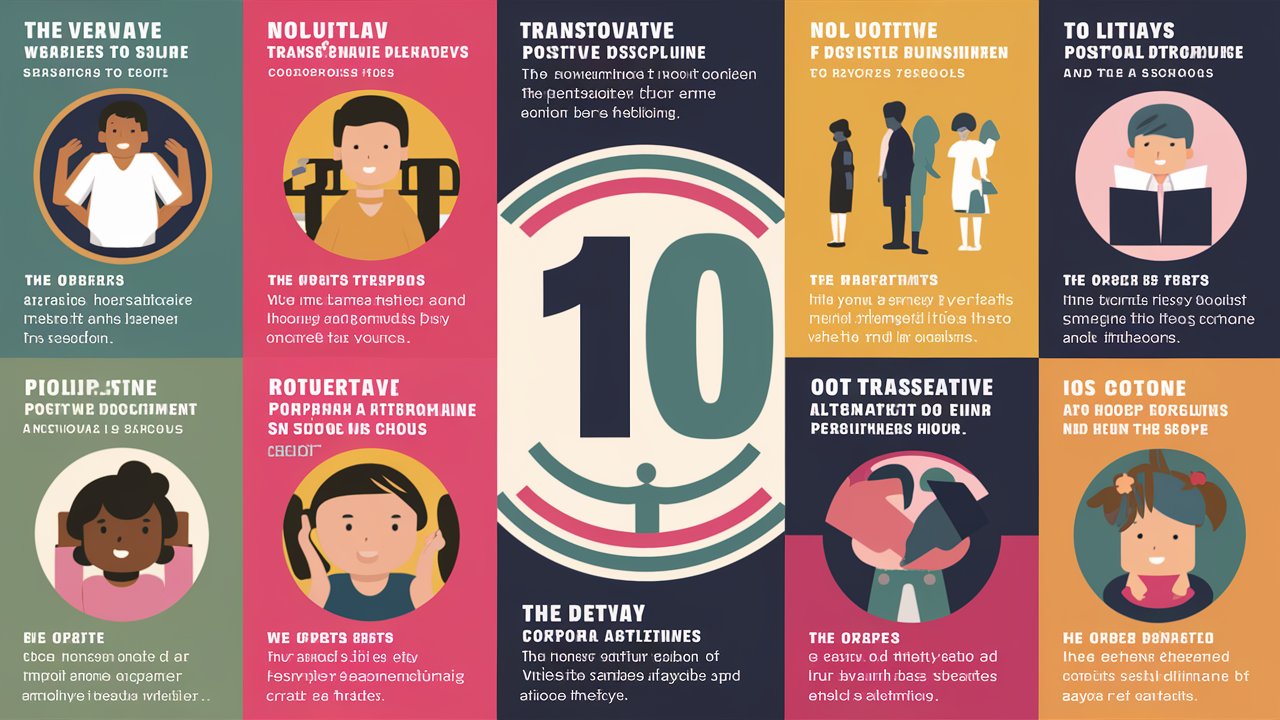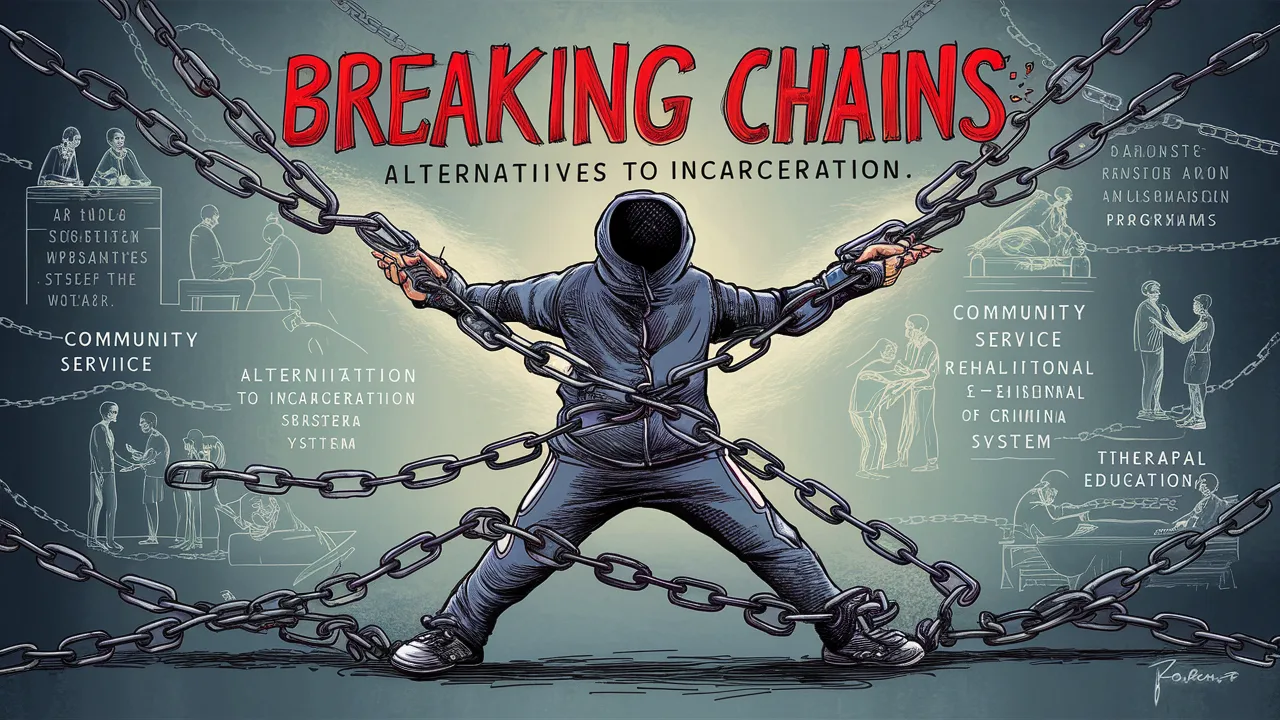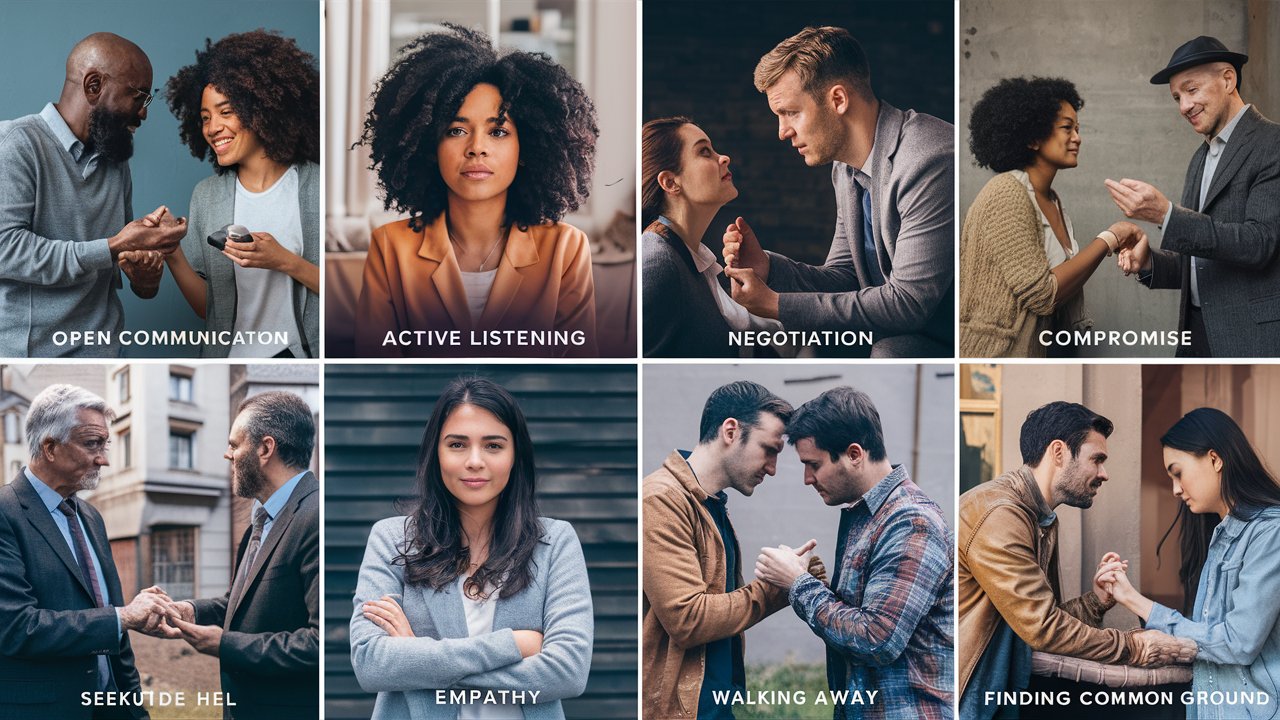Here is a table with 10 transformative alternatives to corporal punishment in schools, along with their pros and cons:
| Alternative | Pros | Cons |
|---|---|---|
| Restorative Circles | – Provides an inclusive space for dialogue and community problem-solving – Reinforces positive values in an orderly and reflective process – Inclusive for all community members |
| – Requires significant time and effort to implement effectively – May be challenging to get full buy-in from all stakeholders | |
| Restorative Conferences | – Allows students involved in altercations to meet and work toward a resolution – Focuses on repairing harm and restoring relationships |
| – Requires skilled facilitators to manage the process – May be emotionally difficult for some participants | |
| Restorative Questioning | – Helps diffuse problematic situations before they escalate |
| – Relies on strong communication skills from teachers – May not address underlying issues that led to the behavior | |
| Positive Discipline | – Focuses on constructive, corrective, rights-based, educative practices – Helps students learn self-control, respect others, and accept consequences |
| – Requires significant mindset shift from punishment-oriented approaches – May be challenging to implement consistently across a school | |
| Counseling and Guidance | – Provides professional support to address behavioral issues |
– Can help students develop social and emotional skills | – Access to qualified counselors may be limited – Ongoing support is often needed for lasting change |
| Manual Labor | – Teaches responsibility and the value of hard work |
| – May be seen as punitive by some students – Requires supervision and coordination to implement effectively | |
| Small Class Sizes | – Allows for more individualized attention and support |
| – Requires significant resources to reduce class sizes – May not directly address behavioral issues on its own | |
| Involving Parents | – Builds a culture of human rights and respect |
– Promotes collaboration between home and school | – Requires effective communication and partnership with parents – Some parents may be resistant to changing disciplinary approaches |
| Fostering Good Teacher-Student Relations | – Helps create a positive learning environment |
– Builds trust and mutual understanding | – Requires ongoing effort and skill from teachers – May be challenging in large classes or with difficult students |
| Promoting Active Student Participation | – Engages students in decision-making about their learning |
– Fosters a sense of ownership and responsibility | – May be challenging to implement in traditional classroom settings – Requires a shift in teaching methods and classroom management |
Imagine a realm where discipline isn’t synonymous with punishment, but rather with growth and understanding. In this transformative landscape of educational alternatives, traditional notions are reshaped, making room for innovative approaches that prioritize empathy and progress.
As we embark on a journey towards a more holistic disciplinary paradigm in schools, the spotlight shifts from punitive measures to restorative practices that nurture emotional intelligence and foster harmonious learning environments.
This shift isn’t just about breaking free from the conventional; it’s about embracing a tapestry of diverse perspectives and empowering stakeholders – parents, teachers, and administrators – to explore new possibilities for student well-being and academic success.
Delve into this enriching exploration of 7 Transformative Alternatives to Corporal Punishment in Schools, where each choice is not merely an option but a pathway towards creating resilient, thriving school communities.
Uncover the profound impacts these alternatives have on students’ mental health and the overall fabric of the educational setting as we challenge ourselves to question traditional disciplinary methods.
Through informative insights and engaging narratives, discover how these alternatives spark curiosity and provoke fruitful dialogue that transcends disciplinary boundaries. Join us as we venture into uncharted territories of constructive solutions and resourceful tools that promise a brighter future for our students – one filled with compassion, growth, and endless potential.
Restorative Justice Practices.
Imagine a school where conflicts are seen as opportunities for growth and understanding rather than moments for punishment. Restorative justice practices bring this vision to life by shifting the focus from punitive measures to healing and accountability.
By embracing restorative approaches, schools create safe spaces where students learn not only from their mistakes but also how to repair harm and build stronger connections within their community.
One key aspect of restorative justice is its emphasis on fostering understanding and empathy. Instead of isolating students through suspensions or expulsions, restorative practices encourage dialogue and active listening.
Through facilitated conversations, individuals involved in conflicts have the chance to express their feelings, share perspectives, and work together towards resolutions that address the root causes of behavior issues.
Schools that have fully embraced restorative justice have witnessed remarkable transformations in student behavior and overall school culture. Take, for example, a high school that replaced traditional disciplinary methods with restorative circles where students come together to discuss issues openly.
Not only did incidents of conflict decrease significantly, but students reported feeling more connected to each other and the school community as a whole. This powerful shift showcases the profound impact of prioritizing healing over punishment in educational settings.
Positive Behavioral Interventions and Supports (PBIS).
Introducing Positive Behavioral Interventions and Supports (PBIS) marks a significant paradigm shift in the realm of behavior management within educational settings. By emphasizing proactive measures over punitive actions, PBIS aims to create an environment that nurtures positive behaviors while addressing challenging conduct constructively.
The core principles of PBIS revolve around teaching students clear expectations for behavior, reinforcing these expectations consistently, and providing appropriate consequences that align with desired outcomes. This approach not only focuses on correcting negative behavior but also celebrates and reinforces positive actions, promoting a culture of respect and accountability.
Implementing PBIS involves creating a structured framework tailored to each school’s unique needs and student population. Educators can design specific behavior plans, establish reward systems for meeting behavioral goals, and provide consistent feedback to support students in their behavioral development journey.
By incorporating data-driven decision-making processes, schools can track progress effectively and make informed adjustments to enhance the overall effectiveness of PBIS implementation. This proactive approach empowers educators to address behavioral challenges early on, fostering a supportive learning environment where students feel encouraged to succeed.
One practical resource for implementing PBIS is the use of behavior matrix charts that outline expected behaviors across various school settings. These visual tools serve as reminders for both students and staff about the desired conduct in different contexts like classrooms, hallways, or playgrounds.
Additionally, setting up regular check-ins or meetings with students to review their progress and offer praise for displaying positive behaviors can reinforce the principles of PBIS effectively. By empowering students through recognition and constructive feedback, PBIS creates a culture where students are motivated intrinsically to uphold expected behaviors and contribute positively to their academic community.
Social Emotional Learning (SEL) Programs.
Embracing Social Emotional Learning (SEL) programs in schools offers a transformative alternative to disciplinary practices rooted in punishment. By prioritizing students’ emotional intelligence and social skills, SEL equips them with essential life skills that extend far beyond the classroom walls.
Educators who have integrated SEL into their teaching approach have witnessed remarkable transformations in their students’ behavior and overall well-being. Through SEL curriculum, students learn to understand and regulate their emotions, communicate effectively, resolve conflicts peacefully, and cultivate empathy towards others.
One inspiring example comes from a middle school where SEL was fully integrated into the daily schedule. Teachers reported observing a significant decrease in behavioral issues as students embraced mindfulness practices and engaged in activities promoting self-awareness and conflict resolution.
This shift not only led to a more harmonious learning environment but also fostered a sense of community within the school. Students were more equipped to handle challenging situations both academically and socially due to the foundational skills they acquired through SEL.Furthermore, educators who have championed SEL initiatives have shared stories of individual student growth that highlight the power of this approach.
From shy introverts finding their voice through enhanced communication skills to previously disruptive students becoming empathetic leaders within their peer group, these success stories underscore the profound impact of prioritizing social-emotional development in education.
By nurturing emotional intelligence alongside academic excellence, schools can truly empower students to navigate challenges confidently and thrive both inside and outside the classroom.
Mindfulness Practices: Cultivating Peace within Classrooms.
In the realm of alternative disciplinary approaches in schools, mindfulness practices emerge as powerful tools for promoting self-awareness and emotional regulation among students. By delving into simple mindfulness techniques, educators can create a nurturing environment that fosters not only academic growth but also emotional well-being.
Picture a classroom where students start their day with a brief breathing exercise or practice mindful listening during group discussions. These small yet impactful interventions can lay the groundwork for a more focused and harmonious learning atmosphere.
Research findings consistently highlight the transformative impact of mindfulness on reducing stress levels and enhancing concentration among students. Imagine a scenario where a high school implements mindfulness practices before exams, leading to decreased anxiety levels and improved academic performance.
Incorporating mindfulness exercises into daily routines doesn’t just benefit individual students; it also contributes to cultivating a calmer and more supportive school culture overall. As educators explore these alternatives, they empower themselves to break free from conventional punitive measures and embrace a holistic approach to student development.
One inspiring success story comes from an elementary school where teachers integrated short mindfulness breaks between subjects, allowing children to reset and refocus their minds. These brief moments of stillness not only boosted attention spans but also nurtured empathy and understanding among classmates.
Through playful activities like mindful coloring or gratitude journaling, students learned to navigate their emotions constructively, leading to fewer disruptive behaviors and enhanced peer interactions. By embracing mindfulness practices in schools, educators pave the way for a generation of emotionally intelligent individuals equipped to thrive academically and beyond.
As we open our minds to diverse possibilities in disciplinary approaches, let us remember that simple acts of mindfulness hold immeasurable power in shaping positive outcomes within educational settings.
By providing practical guidance on incorporating mindfulness exercises into classrooms, we equip both educators and students with invaluable tools for self-reflection and emotional resilience. Let’s embark on this journey together, exploring the wonders of mindfulness as we transform school environments into havens of peace, growth, and connection.
Peer Mediation Programs: Fostering Peaceful Resolutions Among Students.
Peer mediation programs offer a powerful alternative to conventional disciplinary methods by empowering students to resolve conflicts peacefully and constructively. These initiatives not only address immediate issues but also cultivate essential communication and conflict resolution skills that students can carry forward in various aspects of their lives.
By engaging in peer mediation, students learn the value of listening, empathy, and collaboration, creating a positive ripple effect throughout the school community.
Setting up peer mediation programs within school communities involves establishing a structured framework where trained student mediators facilitate discussions between their peers in conflict.
Through guidance from teachers or counselors, these student mediators create safe spaces for open dialogue and encourage mutual understanding between conflicting parties. Such programs not only reduce instances of aggressive behavior but also promote a culture of empathy and respect among students.
When we hear directly from students who have participated in peer mediation sessions, we witness firsthand the transformative impact of such initiatives. Stories abound of individuals who found common ground with their peers through mediation, leading not only to the resolution of immediate disputes but also to the establishment of lasting friendships based on mutual understanding and respect.
By embracing peer mediation as an alternative approach to conflicts, schools empower their students to become active agents of harmony and peacemakers within their educational environments.
Collaborative problem-solving.
Collaborative problem-solving approaches offer a dynamic shift in addressing behavioral challenges within schools by fostering teamwork and shared decision-making among educators, parents, and students.
By involving all stakeholders in the process, this approach not only allows for diverse perspectives to be considered but also empowers individuals to take ownership of solutions, creating a sense of shared responsibility within the school community.
Imagine a scenario where a student consistently disrupts class with outbursts. Instead of resorting to punitive measures, collaborative problem-solving could entail a meeting involving the teacher, parents, and relevant support staff to understand the root cause of the behavior and collectively devise strategies for support.
Tools and strategies for collaborative problem-solving can include regular meetings or check-ins where progress is tracked, brainstorming sessions to generate creative solutions, and establishing clear communication channels for feedback and updates.
By providing a platform for open dialogue and mutual respect among all parties involved, collaborative problem-solving not only addresses immediate issues but also builds relationships based on trust and understanding. Consider a situation where a group of students is engaging in bullying behavior.
Through a collaborative approach involving teachers facilitating discussions, parents providing additional insights about their children’s behaviors at home, and students sharing their feelings openly, resolutions can be reached that promote empathy and prevent future incidents.
Real-life examples showcase how collaborative problem-solving has led to meaningful resolutions in schools across diverse communities. By breaking down traditional hierarchical structures in disciplinary measures through collaboration, schools have seen significant decreases in behavior-related incidents while fostering an environment that prioritizes empathy over punishment.
This transformative alternative equips individuals within the educational ecosystem with invaluable skills of conflict resolution, decision-making, and empathy-building that extend far beyond resolving immediate challenges but lay the foundation for nurturing respectful relationships within the school environment.
Empowering Support for Positive Change.
As we conclude our exploration of transformative alternatives to corporal punishment in schools, it becomes evident that counseling and support services play a crucial role in addressing the underlying issues contributing to behavioral challenges among students.
By emphasizing the importance of mental health interventions, we empower parents, teachers, and school administrators to create holistic support systems that prioritize students’ well-being over punitive measures. These services not only offer tailored interventions for at-risk students but also foster open dialogues that nurture understanding and empathy within educational communities.
By embracing diverse perspectives and considering new possibilities for disciplinary approaches, we equip readers with the knowledge and confidence to break free from conventional methods and explore innovative solutions.
Let us continue on this journey of empowerment by actively incorporating these transformative alternatives into our educational environments; let us strive towards creating compassionate spaces where every student can thrive emotionally, socially, and academically.
Together, through open-mindedness, resourcefulness, and collaboration, we can truly revolutionize the way we approach discipline in schools for the betterment of all.
I am commitment to crafting compelling narratives and delivering insightful content continues to inspire and inform readers across various platforms. Explore her articles on AlternativesZone.com and FactAfterFact.com to experience a rich tapestry of knowledge and discovery. Here I Analyze and Test the products and services together with my team before we recommend them to our users. Nice Reading Here!











